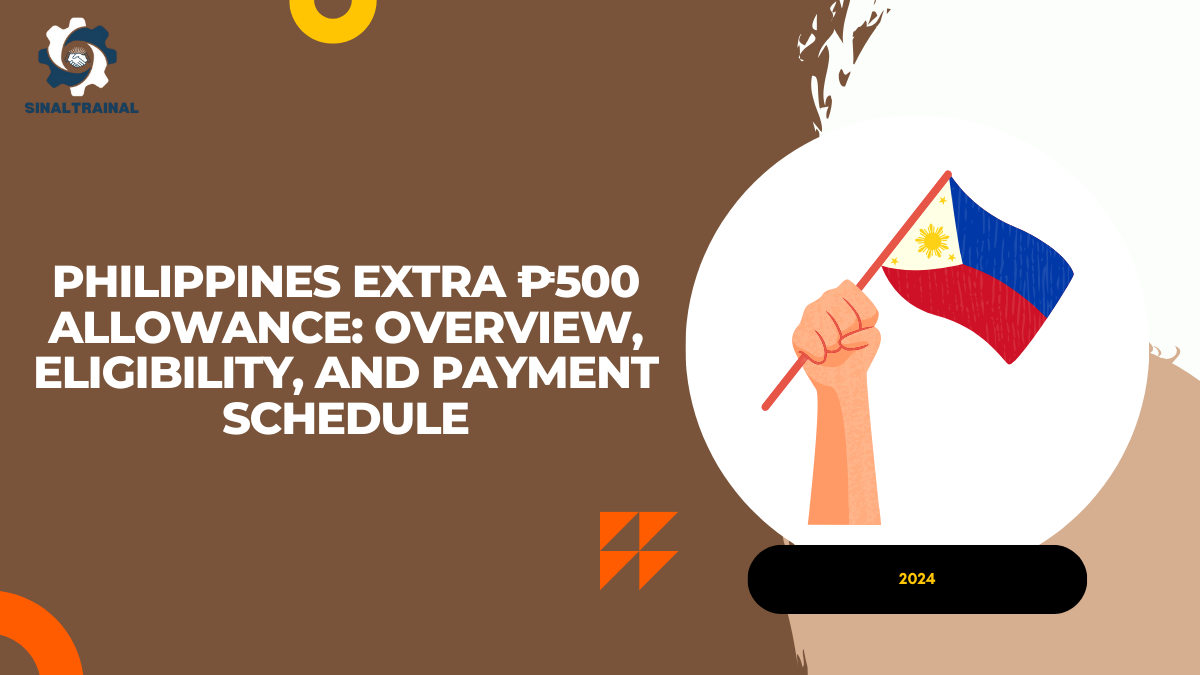The Philippine government has implemented a monthly ₱500 allowance aimed at providing financial assistance to disabled individuals. This initiative, overseen by the Department of Social Welfare and Development (DSWD), is part of broader efforts to improve the lives of persons with disabilities (PWDs) in the country. This article explains the details of the allowance, including eligibility criteria, payment schedules, and how beneficiaries can claim the aid.

Understanding the ₱500 Supplementary Allowance
The ₱500 supplementary allowance is designed to help PWDs manage the extra expenses they face due to their disability. This financial aid can be used for various needs, such as medical treatments, the purchase of assistive devices, transportation to medical appointments, and other essential services.
Living with a disability can bring financial burdens that accumulate quickly. Recognizing these challenges, the government, through the DSWD, provides this allowance to ease the load. More than just immediate financial relief, the initiative aims to improve the overall well-being of PWD beneficiaries.
Who Can Receive the ₱500 Supplementary Allowance?
To ensure that the ₱500 monthly allowance reaches those who genuinely need it, applicants must meet specific criteria. Below are the main eligibility requirements:
1. Certified Disability
The applicant must have a recognized disability, be certified by a licensed medical professional and be acknowledged by the DSWD. This certification serves as proof that the individual requires additional financial support due to their disability.
2. Philippine Residency
Only residents of the Philippines are eligible for this program. Applicants must provide proof of residency, such as a barangay certificate, to ensure that the financial aid is limited to Filipino citizens.
3. Registered with the DSWD’s PWD Registry
Applicants must be registered with the DSWD’s Persons with Disability (PWD) registry and possess an official PWD ID. This registration is not only required to qualify for the allowance but also opens doors to other government benefits for disabled individuals.
4. Income Evaluation
The DSWD will assess the household income of each applicant to ensure that financial aid is directed toward those with the greatest need. Priority is given to lower-income individuals and families.
How to Apply for the ₱500 Supplementary Allowance
The application process for the ₱500 allowance is designed to be straightforward, helping PWDs access this financial aid smoothly. Here’s a step-by-step guide to applying:
1. Registration and Application
- Visit your nearest DSWD office or a PWD desk at your local government unit (LGU).
- Complete the application form with personal details, information about your disability, and your household income.
- Attach all required documents, such as a medical certificate, proof of residency, and your PWD ID.
- Submit the filled-out form and documents to the DSWD or PWD desk.
2. Verification and Assessment
Once the application is submitted, the DSWD or PWD desk will verify the information. This process might include home visits or interviews to confirm the applicant’s condition and financial need. Verification ensures that only those who truly require assistance receive the allowance.
3. Approval and Notification
After the verification process, the DSWD will review the application and determine eligibility. If approved, applicants will be notified and given instructions on how to receive the allowance. If denied, applicants will be informed of the reasons behind the decision.
4. Receiving the Allowance
The ₱500 allowance is distributed monthly through several payment methods:
- Direct bank transfers,
- Cash cards,
- Payout centers are authorized by the DSWD.
It is crucial for beneficiaries to keep their contact information up to date with the DSWD to avoid missing notifications or payments.
Payment Schedule and Key Dates
The ₱500 allowance is paid out every month, following a standard schedule that helps beneficiaries plan their finances.
First Week of the Month
In the first week of each month, new applicants receive approval notifications, including information on how they will receive their payments.
Mid-Month Payment
Payments are generally processed and disbursed around the middle of each month. While the exact date may vary due to holidays or administrative reasons, the goal is to maintain a regular payment schedule.
Quarterly Review
Every three months, the DSWD reviews the status of beneficiaries to ensure they still meet the eligibility criteria. This review may involve updating medical certificates or financial records. Keeping up with these reviews is essential for uninterrupted access to the allowance.
Additional Considerations for Beneficiaries
While the ₱500 supplementary allowance provides financial support, there are important things beneficiaries should keep in mind to ensure smooth processing and continuation of their benefits.
1. Renewal and Compliance
Beneficiaries must comply with the DSWD’s renewal requirements, such as submitting updated medical certifications and income assessments. Staying on top of these requirements is key to ensuring ongoing eligibility for the program.
2. Reporting Issues
If beneficiaries encounter any problems, such as delayed payments or errors in the amount received, they are encouraged to report these issues to the DSWD. Transparency and accountability are priorities for the department.
3. Access to Additional Support
In addition to the ₱500 allowance, the DSWD offers a range of other services, including skills training, rehabilitation programs, and access to assistive devices. Beneficiaries are encouraged to explore these resources to further improve their quality of life.
Conclusion
The ₱500 supplementary allowance is a crucial part of the Philippine government’s commitment to supporting individuals with disabilities. By understanding the eligibility requirements, following the application process, and staying informed about payment schedules, beneficiaries can effectively access this important financial aid. Beyond the monetary relief, this program promotes inclusivity, dignity, and empowerment for people with disabilities in the country.
For more information, click here.